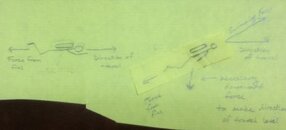Maybe not the most appropriate place for this anecdote, but at least it's on topic.
I was on a dive boat a few years ago diving without a wetsuit and a steel back plate, and was balanced (i.e. could swim up, and could hold a safety stop with no gas in the wing). Another diver on the boat suggested that I take a weight belt with a few pounds on it just so that I would have something to ditch in case of an emergency!
I was on a dive boat a few years ago diving without a wetsuit and a steel back plate, and was balanced (i.e. could swim up, and could hold a safety stop with no gas in the wing). Another diver on the boat suggested that I take a weight belt with a few pounds on it just so that I would have something to ditch in case of an emergency!




